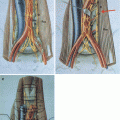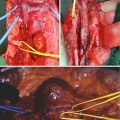Chemotherapy
Classification system
Number of patients
Favourable response rates (%)
Progression-free survival (%)
Conclusion
First author
BEP × 4
Indiana University
159
73
61
Double-dose cisplatin not superior and more toxic
Nichols
v
BEP200 × 4
68
63
BEP × 4
Indiana University
299
60
57
Substitution of ifosfamide for bleomycin not superior and more toxic
Nichols
v
VIP × 4
63
56
BEP × 4
EORTC
250
76
NR
Alternating regimen not superior and more toxic
de Wit
v
BEP/PVeB × 4
72
NR
BEP × 4/EP × 2
MRC/EORTC
380
57
55
Dose-dense alternating regimen not superior and more toxic
Kaye
v
BOP/VIP-B
54
53
BEP × 4
Institut Gustave Roussy
190
61
47
Alternating regimen not superior and more toxic
Culine
v
CISCA/VeB
54
37
P200VeBE × ¾
Institut Gustave Roussy
115
75
54
High-dose chemotherapy not superior and more toxic
Droz
v
P200VeBE × 2 + P200EC
67
47
BEP × 4
IGCCCG
219
55
48
High-dose chemotherapy not superior and more toxic
Motzer
v
BEP × 3 + CaEC
56
52
BEP × 4
IGCCCG
137
33
45
High-dose chemotherapy not superior and more toxic
Daugaard
v
VIP × 1 + HD-VIP × 3
45
58
BEP × 4
IGCCCG
263
30
48
Personalised chemotherapy improves PFS in patients with unfavourable tumour marker decline after 1 BEP
Fizazi
v
BEP × 1 + T-BEP-Ox × 2 + BIP × 2 in patients with unfavourable tumour marker decline
40
59
6.3 Tumour Marker Decline Is a Prognostic Factor in Poor-Risk GCT
Investigators have studied whether a slow decline in hCG and AFP during chemotherapy could single out patients likely to fail conventional therapy [7, 12–14]. A subgroup of patients with poor-prognosis NSGCT with a better outcome was identified based on a tumour marker decline assessed 3 weeks after the start of chemotherapy [14]. Baseline and days 18–21 tumour marker values are introduced into a logarithmic formula, which defines a favourable and an unfavourable decline pattern in serum tumour markers. A decline is defined as favourable only if both AFP and hCG declines are considered favourable by the formula. The calculator tool is available online at http://www.gustaveroussy.fr/calculation-tumor/NSGCT.html. Using this method, patients with an unfavourable decrease and those with a favourable decrease had a 3-year PFS rate of 46 and 73 % (p = 0.01) and an overall survival (OS) rate of 59 % and 81 % (p = 0.02), respectively [14]. These data were prospectively confirmed in a separate set: 48 % [95 %CI: 38; 59 %] versus 70 % [95 %CI: 57–81 %] for 3-year PFS (p = 0.01) and 65 % [95 %CI: 55–75 %] versus 84 % [95 %CI: 71–92 %] for OS (p = 0.02) in patients with poor-risk NSGCT and an unfavourable and a favourable decline, respectively [15].
Stay updated, free articles. Join our Telegram channel

Full access? Get Clinical Tree






